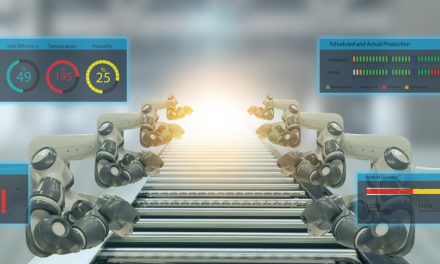Design for Assembly to Reduce Costs and Save Time
By Gordon Macdonald, Process Improvement Manager, Dynamic EMS
How does the assembly process influence the design, and how does the design influence the assembly process?
 At Dynamic EMS we understand that no two customers are the same. Their products, their supply chains, and their markets all differ. This is why we offer a tailor-made, customised Electronics Manufacturing Service (EMS) to customers with a complex, highly-diversified business. And this is why we don’t refer to ourselves as a traditional EMS company, but more than this, we believe we are the Original Equipment Manufacturers (OEM) Product Solutions Architect.
At Dynamic EMS we understand that no two customers are the same. Their products, their supply chains, and their markets all differ. This is why we offer a tailor-made, customised Electronics Manufacturing Service (EMS) to customers with a complex, highly-diversified business. And this is why we don’t refer to ourselves as a traditional EMS company, but more than this, we believe we are the Original Equipment Manufacturers (OEM) Product Solutions Architect.
In order to fulfil our role to the best of our ability, we prefer to engage with our customers during the design phase of their production lifecycle. To simplify our customer’s journey through their tailored yet ‘dynamic’ PLC, we offer consultation on how to design their product, taking the assembly process into consideration. Ultimately, in order to reach sometimes very aggressive yet agile forecasts, the need for manufacturing simplicity dictates the product design. At Dynamic, we refer to this as ‘Design For Assembly’ (DFA).
Design For Assembly (DFA) is a process by which products are designed with ease of assembly in mind. For example, if a product contains fewer electronic component parts or the bill of materials (BOM) is simple in nature, it will naturally take less time to assemble, thereby reducing our customer’s manufacturing costs. It’s at this stage, that our customers will see the main cost benefit of the application of Design For Assembly.
Recognising that time-to-market is vital, we enable a smooth production introduction and seamless transition to volume manufacturing. This focus ensures that our customers maximise their business opportunities with a timely market entry
Our customers, the OEMs, are either established brands, or start-ups. Both are technology companies with the same industry drivers. One of those industry drivers is rapid innovation, which initiates the need-for-speed.
At Dynamic EMS, we connect technology requirements to the speed of innovation and ensure that our customers can leverage off the benefits that speed-to-market brings.
Design for Assembly is one of the main driving factors that can be beneficial to support the need for speed.
Working in a low volume/high mix (LV/HM), complex assembly environment like Dynamic, we have the benefit that we can alter our manufacturing set-up to accommodate our customers’ requirements. LV/HM EMS companies can typically be more flexible in the layout of their shop floor, as they don’t have the high demands that that high-volume EMS players have. This means that if our customer requires a certain shop floor configuration to optimise their production for higher yield, we can accommodate, and we can do so in a timely manner.
Therefore, we can say, at Dynamic EMS the design of the product will often influence our assembly process in terms of layout, but also in terms of equipment used, resources required, and production schedules. Only the nimblest of EMS partners can react to these kind of variables.
Our adaptive and agile approach delivers a responsive service for all customers, and our expertise and investment in technology enables us to manufacture and test the very latest technology. This helps us empower our customers to scale and continue to develop, whilst achieving their critical time-to-market and time-in-yield/profit objectives.
So, how does the assembly process influence the design? Well, it positively influences, especially for complex assembly or customised product configuration. The customer wants the process to be as seamless as possible. Barriers to be removed and risk reduced. So, the assembly process is designed to suit. On the flip side, how does the design influence the assembly process? Again, the answer is positively. If your EMS partner is prepared, via early engagement either direct with the customer, or their design house partner, the standard LV/HM manufacturing process can be altered to specifically suit their production requirements.
Yes, it’s dynamic, but that’s why we call ourselves our customer product solutions architect, as we offer a tailor-made fit.













